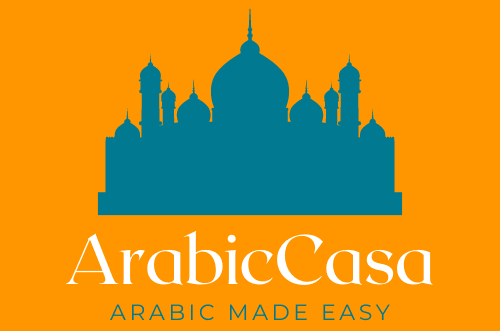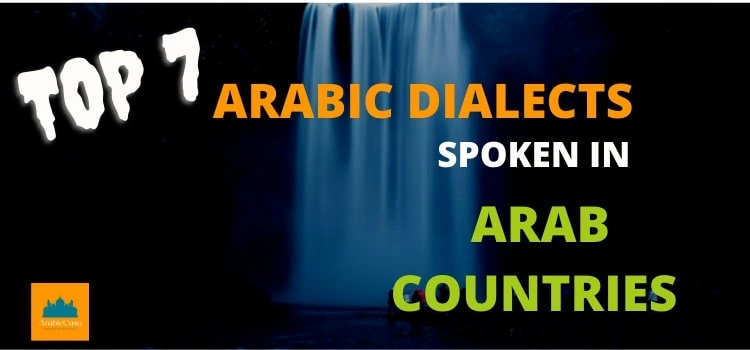Top 7 Prominent Arabic Dialects Spoken in Arab Countries
Though, there is a variety of different Arabic dialects which seems overwhelming for a new language learner, in reality, that difference in dialect is the element that distinguishes different parts of the Arab world and that is the same element that beautifies the Arabic language. In this article, we will discover the top 7 Arabic dialects spoken in arab countries.
We should know that the Arabic language is one of the most sought languages in the world. The popularity of Arabic is increasing with each passing day. Arabic is quite an ancient language with a history of more than 3000 years with trillions of people who have employed Arabic either in listening, speaking, reading, or writing, including both native and non-native speakers. That is also the reason why there are so many different Arabic dialects spoken in Arab countries.
Introduction to Arabic Dialects
Arabs are making their mark in the world economically and strategically. The Arab population is also a major part of the global economy and is growing at faster rates than anywhere else in the world. But we often think of Arabic – or one of its dialects – as a language that is difficult to learn, but not so! Let me introduce you to 7 different dialects spoken in Arab countries and why they are popular for other reasons too.
The top standard Arabic dialect is the one that is used in Arab countries for official purposes. It is also the form of Arabic that is taught in schools. This dialect is based on Modern Standard Arabic, which is the form of Arabic that is used in newspapers and books.
Modern Standard Arabic dialect is different from the dialects that are spoken in Arab countries. It has a different pronunciation and some different words. For example, the word for ‘yes’ in the top standard Arabic dialect is نعم ‘na’am’, while in other dialects it can be عافية ‘a’afye’ or حق ‘Haak’.
Modern Standard Arabic dialect is important for Arab students to learn because it will allow them to communicate with people from other Arab countries. It will also allow them to read and understand newspapers and books written in Arabic.
Arabic Dialects Spoken in Arab Countries
There are many different Arabic dialects spoken in Arab countries. The most common dialects are Egyptian Arabic, Levantine Arabic, and Gulf Arabic.
Each of these dialects has its own unique features. For example, Egyptian Arabic has a different pronunciation than other dialects. Levantine Arabic has a lot of loanwords from French and English. Gulf Arabic has a lot of loanwords from Persian.
Despite these differences, all Arab dialects are mutually intelligible. That means that people who speak different dialects can understand each other.
Here is a brief description of the 7 different most common dialects of Arabic spoken throughout the Arab world.
1. Egyptian Arabic: This is the most widely spoken form of Arabic and is used in media and popular culture. It has reportedly 50 million speakers. Egyptian Arabic is the dialect that is most commonly spoken in Arab countries. It is also the dialect that is most commonly taught in schools.
2. Gulf Arabic: This dialect is spoken in the Persian Gulf region like in Saudi Arabia, Oman, Bahrain, Qatar, the United Arab Emirates, etc with a reported number of speakers reaching approximately 35 million. This dialect has many loanwords from Persian and Hindi.
3. Levantine Arabic: This dialect is spoken in Lebanon, Syria, Jordan, and Palestine. It has many loanwords from French and Turkish with more than 20 million speakers. Levantine dialects are also known for their use of colloquial expressions and slang words. This makes them more informal than other Arabic dialects.
4. Maghrebi Arabic/North African Arabic/ Western: This dialect is spoken in Morocco, Algeria, Tunisia, Mauritania, and Libya. Western dialect is one of the most popular dialects in the Arab world with almost 70 million speakers using this dialect. It has influences from Berber, French, Spanish, and Italian.
5. Mesopotamian Arabic: This dialect is spoken in Iraq (also called Iraqi Arabic) and has influences from Kurdish, Persian, and Turkish. Almost 15 million people around the globe speak the Iraqi dialect This dialect is quite unique from others as it has the sound of ‘p’ and ‘ch’ which are not in other dialects.
6. Sudanese Arabic: Sudanese Arabic dialect and Egyptian Arabic dialect are close enough as both countries are close too. Sudanese Arabic dialect is also closely related to Hijazi Arabic in relation to the pronunciation of words. Sudanese Arabic dialect has around 17 million speakers.
7. Yemeni Arabic: Yemeni Arabic dialect is spoken by approximately 15 million people in Yemen and some other Arab countries. It is largely affected by Himyaritic, Modern South Arabian, and Old South Arabian languages in terms of linguistics. although, Yemeni people widely use Modern Standard Arabic in written and formal arrangements.
Modern Standard Arabic:
Modern standard Arabic is the form of the Arabic language used in writing and in formal speech. It is based on Classical Arabic, a literary register that dates from the 6th century. The Modern Standard Arabic (MSA) form of Literary Arabic is the only liturgical language of Islam and is used for all formal non-vernacular religious purposes, both within Muslim majority countries and in Muslim minority communities around the world.
Conclusion
There are many different Arabic dialects spoken in Arab countries, but the top standard Arabic dialect used officially is Modern Standard Arabic. This dialect is used in formal settings and is understood by most Arabs. If you want to be able to communicate with as many Arabs as possible, learning Modern Standard Arabic is a good place to start.

